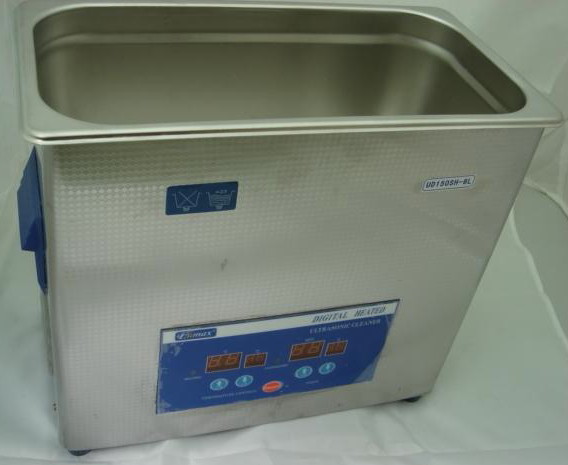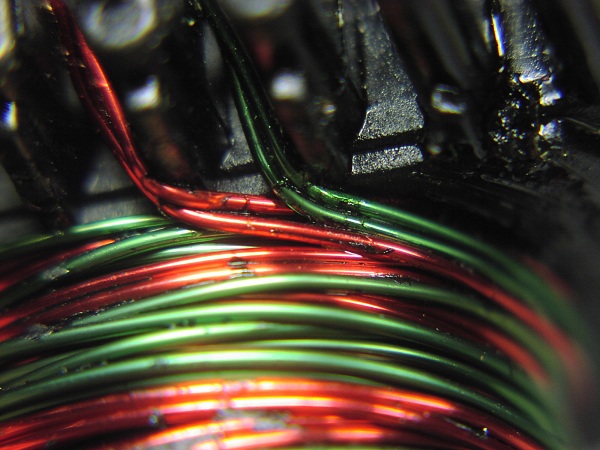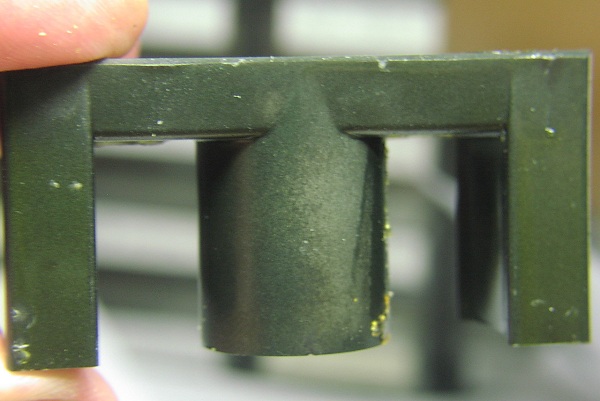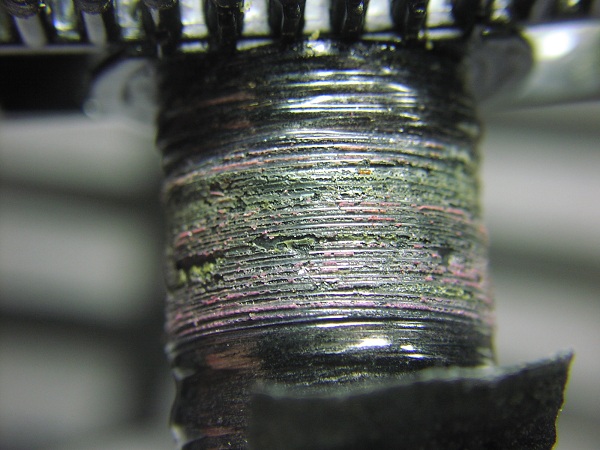|
 |
|
|
|
|
|
|
| |
 |
Super Hot Ferrite Transformer
I got a desperate call from an
ultrasound cleaning machine company. For many years they had successfully been
making 350w units, which ran off 120vac and drove 6 big 40KHz piezoelectric transducers.
But when the manufacture of the big ferrite driver transformers they used in their driver
board went out of business, they were forced to find a replacement from another company.
But, they could not seem to get a replacement transformer to work properly. Transformers
from their new supplier would work for a while but soon got so hot, they smoked. What were
they doing wrong? |
 |
 |
 |
| Ultrasonic Cleaning
Machine |
Cleaning Machine Driver
Board |
Ferrite Transformer |
|
|
I asked the company to send me one of the new transformers and if possible,
at least one transformer from one of their old machines. |
|
When I received the units, I noted that there were no markings on either
device. The old and new transformers looked very much alike. Both had the same
size ferrite E cores and used the same plastic bobbin with identical solder pins.
However, the windings on the new part seem to be taking up a bit more volume around the
core than the older device. This could be a clue, so I made a mental note. |
|
I measured the inductances of all the windings. The inductances of both old
and new transformers were about the same at both the primary and secondary windings.
Since both primary and secondary inductances were about the same, it meant that the
primary and secondary turns ratios were also about the same. No help there. |
| A careful
inspection of the transformer wires on the old and new devices produced valuable clue. The
old transformer used 8 magnet wires for the windings, while the new device used just two
wires of a larger gauge. Winding the transformer with multiple wires can
dramatically reduce the complex impedance of the windings due to skin effect. A
single wire, even a larger gauge wire, would have much more resistance than multiple
insulated wires in parallel. The skin effect would certainly be larger in the two
wire windings when compared with the 8 wire windings. But, would it be so large that
it would cause the thing to smoke? It would certainly be a contributing factor but I
thought something else was the major cause for the excessive heating. |
 |
 |
| Two-Wire Transformer
Windings |
Eight-Wire Transformer
Windings |
 |
 |
| Ferrite E-Core |
Excessive
Heat Melted Bobbin |
|
|
Judging by the physical size of the windings on the new part, it appeared
that the manufacturer used more copper in his part than used in the older part. I
had a theory. I speculated that the new manufacture tried to match the inductances
and core size. But, he might have used a cheaper core material, with a lower
permeability. A lower permeability would mean the transformer would need more turns
to achieve the same inductance. I tested this theory by winding ten turns of wire
around the core of both the old and new transformers and compared the inductance of the
two. I determined that the new core did indeed have a lower permeability. The
ratio was nearly 4 to one. Bingo! |
|
It was now all making sense. Not having clear specs to go by, the new
transformer manufacturer designed his part to match the inductances, size and pinouts of
the old part. But, he used a core with a lower permeability which forced him to use
more turns in each winding. He also used only two wires in parallel for each winding
instead of using 8 wires. This too lowered the cost of the part but made the
transformer much less efficient. I guessed that the combination caused the poor
transformer to dissipate 4 times more heat than the old part. No wonder the part was
smoking. A quick phone call to the transformer company nailed down the proper core
material as well as the number and gauge wire size for all the windings. Transformer
samples were quickly shipped to the cleaning machine company who later reported to me that
the new new part worked perfectly. |
| The lesson
here is that good transformer specifications are critical in products like the ultrasonic
cleaning machine and those specs need to be carefully defined in engineering terms, not
just model XYZ from ABC company. Whenever, possible, I like to include some of those
specs right on the circuit schematic. Those notes could be all that were needed to
insure proper transformer design, in the event written transformer specs were lost. |
|
|
|